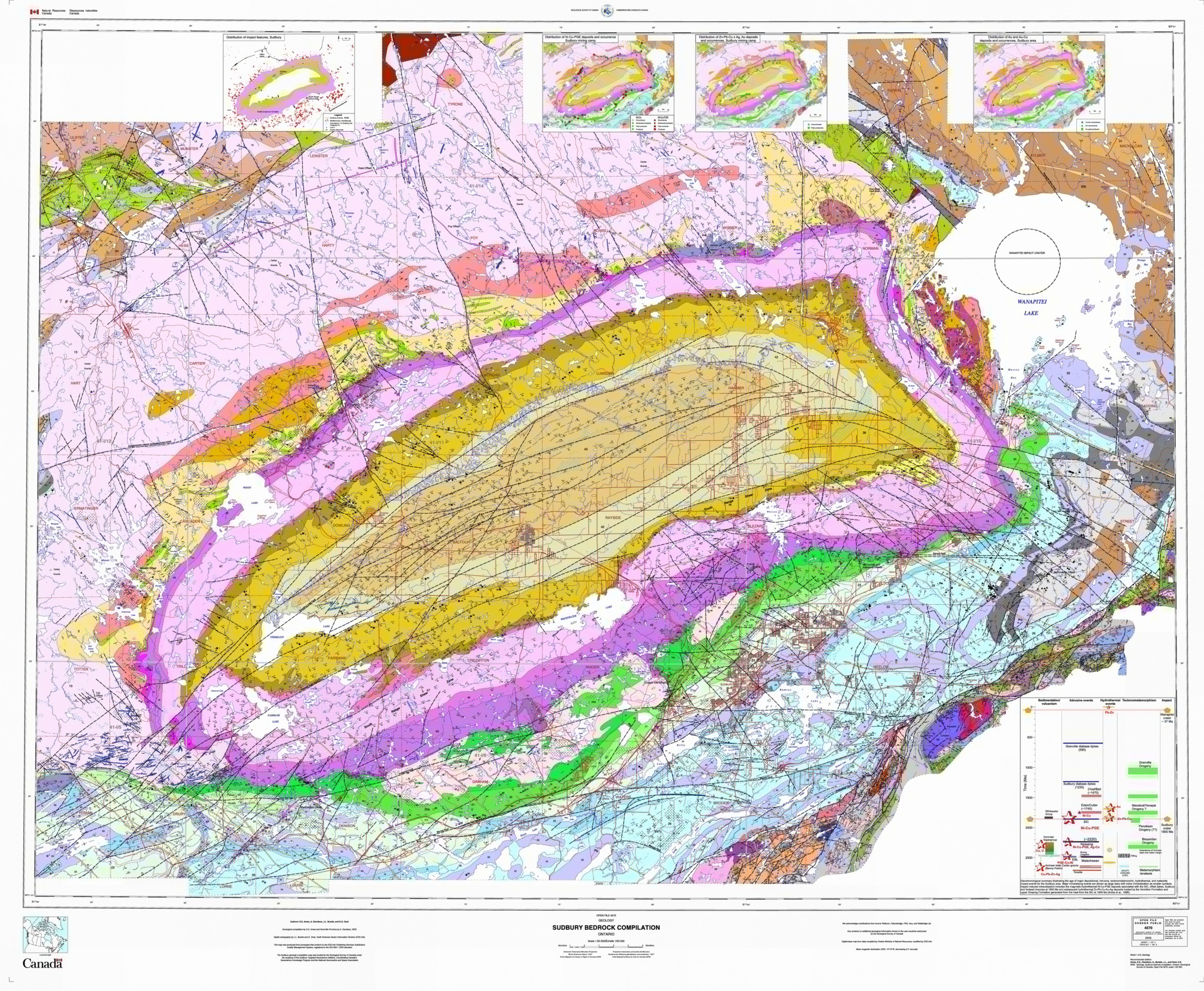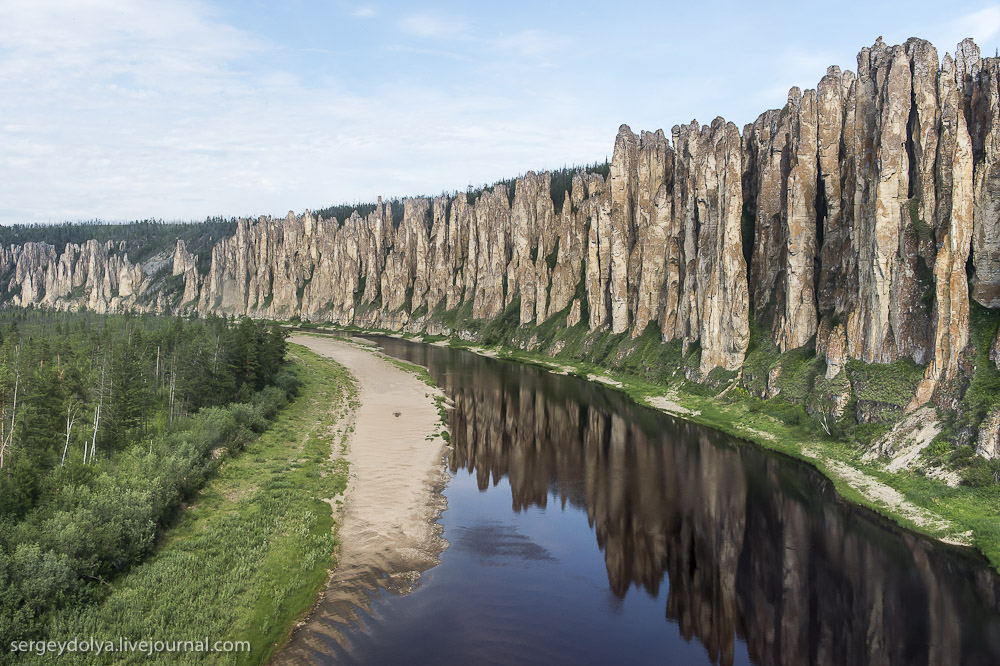there is no bad time to go
Wednesday, 25 June 2014
Wednesday, 18 June 2014
Date ideas 18/6/2014 - Sudbury Igneous Complex
46.673363, -81.025603
Fall back breccia - Black Onaping Formation with pink granitic clasts. Image hosted by Mindat.com (which is awesome, you should visit it!)
 A well studied area due to to mineralisation - every one likes a geological map. Image hosted by the University of Western Ontario
A well studied area due to to mineralisation - every one likes a geological map. Image hosted by the University of Western Ontario
I've been marking honours exercises recently and as a result I've developed a temporary interest in the Sudbury Igneous complex. This mineralised region is the result of a meteorite impact. The impact shattered the country rock and the super high temperatures melted the sulphides. These then settled around the breccia creating banded massive sulphides. It's much more complex than that, but I haven't examined this case study all that deeply. I'd like to fix that though... this would make a lovely couple of weeks camping trip. I wonder if we could finagle a mine visit or three.
Fall back breccia - Black Onaping Formation with pink granitic clasts. Image hosted by Mindat.com (which is awesome, you should visit it!)
 A well studied area due to to mineralisation - every one likes a geological map. Image hosted by the University of Western Ontario
A well studied area due to to mineralisation - every one likes a geological map. Image hosted by the University of Western Ontario Sunday, 15 June 2014
Field trips - Billa Kalina in the Womera Protected Area
Sunset in the South Australian desert during winter - cold but beautiful.

The Woomera Prohibited Area!

The Woomera Prohibited Area!
I have recently completed a short field trip to the Womera Prohibited Area. This zone covers an area greater than England in the South Australia arid area. Still occasionally used for jet / missile (and things) testing, much paperwork is required to gain access. The company I currently work for has a couple of tenements in this area so my boss decided we should go up there and oggle the rocks. Given this area is in the Gawler Craton there weren't many rocks to look at, but we made the most of the ones we could find.
A normal fault in some Bulldog Shale. The resistant layers are reinforced by gypsum and have been displaced by approximately 15 meters.
There were three of those pod like structures separating two different mudstones / weathered shales. Below the main outcrop, slightly sandy and more resistant layers can be seen (near write-in-the-rain fieldbook)
The edges of the pods show the bedding of the mudstone wrapping seamlessly around them. This + xbeds suggests to me that these are paleo-channels. The Bulldog shale is thought to have formed in shallow marine conditions during oceanic transgression.
Labels:
Australia,
Desert,
Field Work,
Places I've been,
South Australia,
Womera
Wednesday, 11 June 2014
Date idea 11/6/2014 - Alpine nappe folds
Being a geologist with a decideily structural bent, I like folds and figuring out the deformation history of the rocks. So apart from the great hiking this site would provide, I'd also love to get up close and personal with the nappes.
This image was nabbed from Wikimedia. It was uploaded by Woudloper with the following caption: "Detachment folding in Lower Jurassic limestone layers of the Doldenhorn nappe, Gasteretal, Switzerland. Location is at the Waldhus, looking north. Scale of the outcrop is about 1 km from left (west) to right (east). Mountain ridge is from Jegertosse (2154 m, left) to the Innerer Fisistock (2787 m)"
For more great nappe images go here and here
This image was nabbed from Wikimedia. It was uploaded by Woudloper with the following caption: "Detachment folding in Lower Jurassic limestone layers of the Doldenhorn nappe, Gasteretal, Switzerland. Location is at the Waldhus, looking north. Scale of the outcrop is about 1 km from left (west) to right (east). Mountain ridge is from Jegertosse (2154 m, left) to the Innerer Fisistock (2787 m)"
For more great nappe images go here and here
Wednesday, 4 June 2014
Date Ideas 4/6/14 - Anti-Atlas Mountains, Morocco
Not that we need a reason to visit Morocco, but I am rather partial to folds and fold interference patterns such as those seen in the Anti-Atlas Mountains in Morocco.
29 27 26.62N, 08 38 40.69W Kindly provided as a desktop mapping project by these guys.
Sunday, 1 June 2014
Historic places I've been - Mt Tamborine, Queensland
Mount Tamborine is the remnants of the edge of a shield volcano. In 2012 I found this more resistant bit, or possible dyke on the side of the road and had to stop and pose with it. I know nothing of the local geology except Brisbane area is one giant volcano (possibly hotspot related) and as a result they appear to have ignimbrite as their paving stone of choice (Melbourne uses Basalt - what does your city use?). It's on the side of a road around -27.909855, 153.181835.

Further down the road at Ceder Creek Falls, -27.894321, 153.185086. It's hard to take a selfie AND capture what looks like a contact between lava flow and ignimbrite (on the right)
Large clast in the ignimbrite with bracelet for scale - no compass, no geopick, no handlense and no scale bar, what sort of holidaying geologist am I?
Late stage faulting with quartz/calcite? infill - where's your hardness kit when you need it?
 And finally what we came here for - Ceder Creek Falls looking down at the main pond. This is the best shot - I got everything else came out blurred. I suspect this'd be a lovely place to swim in summer.
And finally what we came here for - Ceder Creek Falls looking down at the main pond. This is the best shot - I got everything else came out blurred. I suspect this'd be a lovely place to swim in summer.
Subscribe to:
Posts (Atom)













